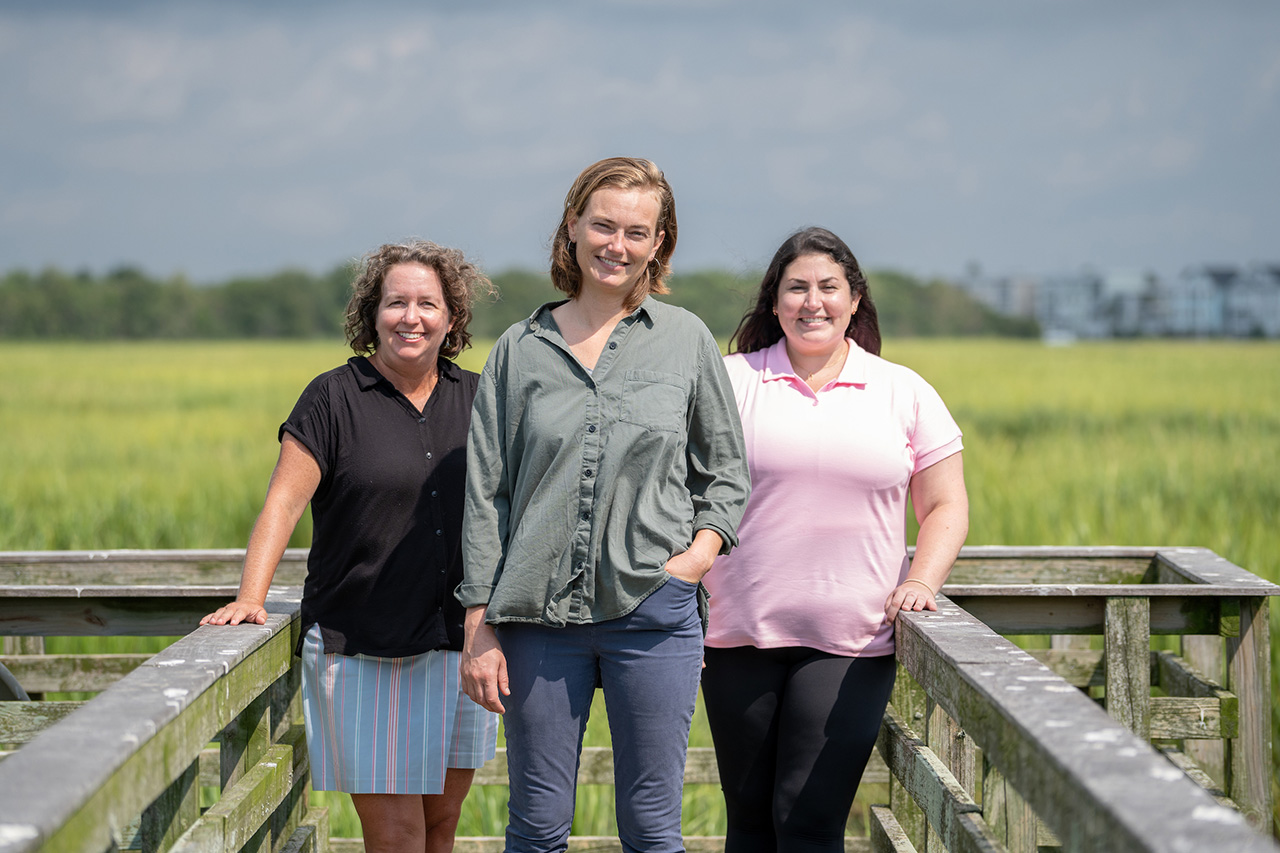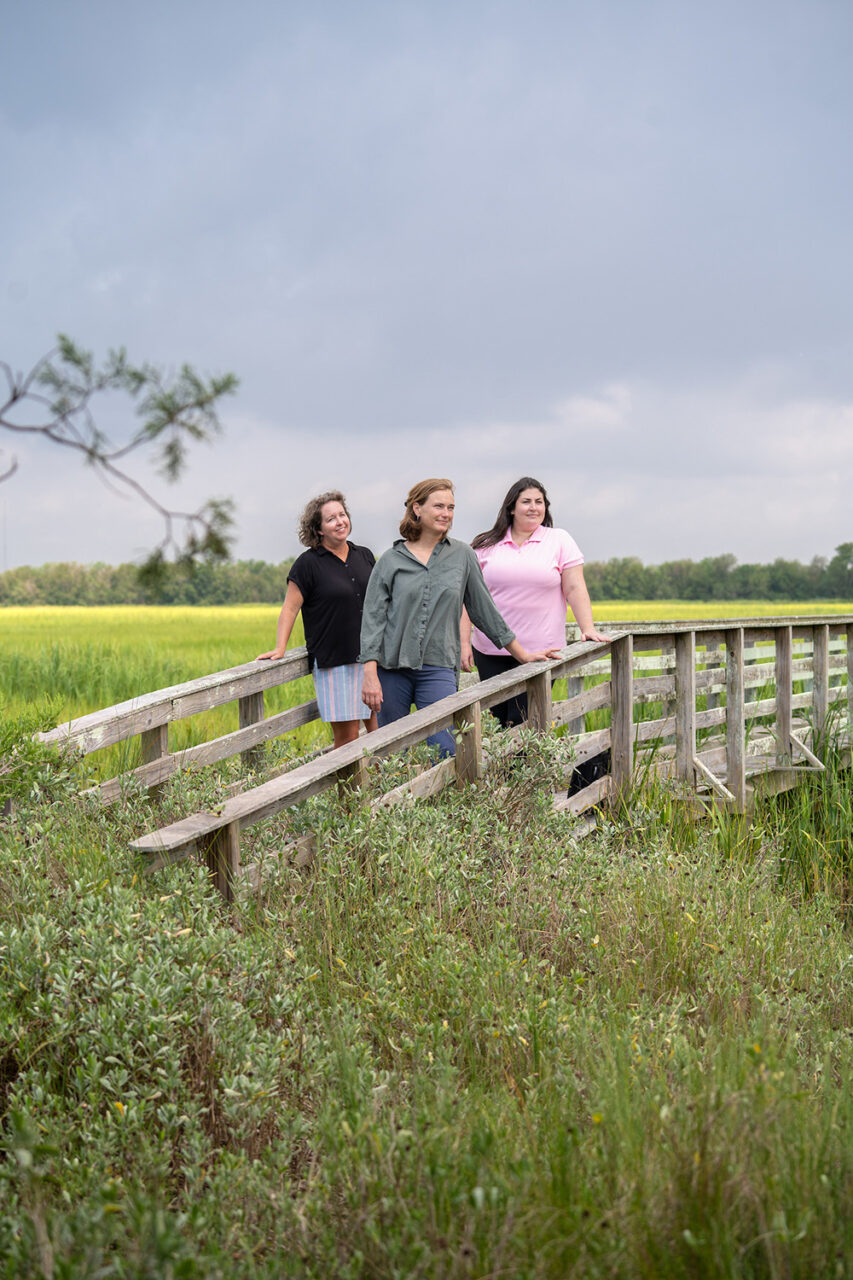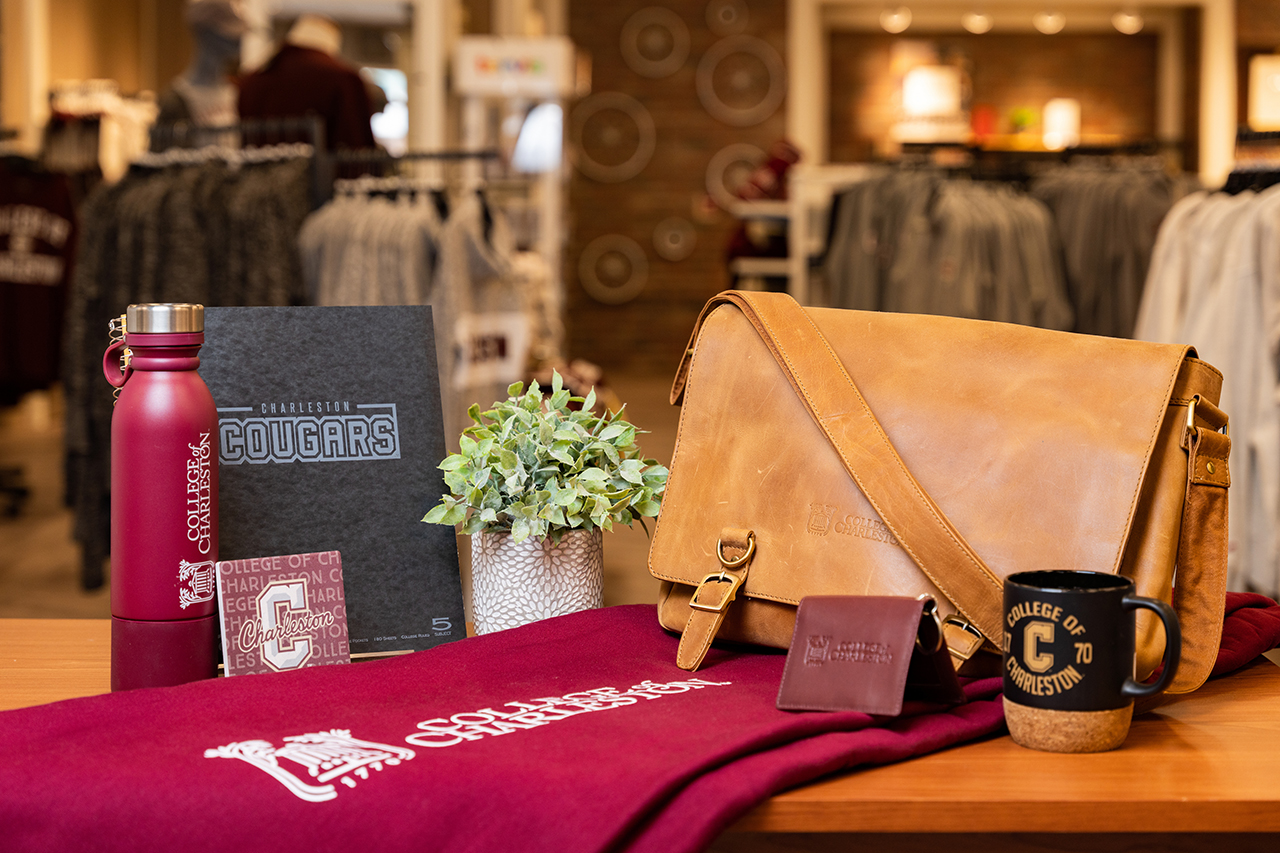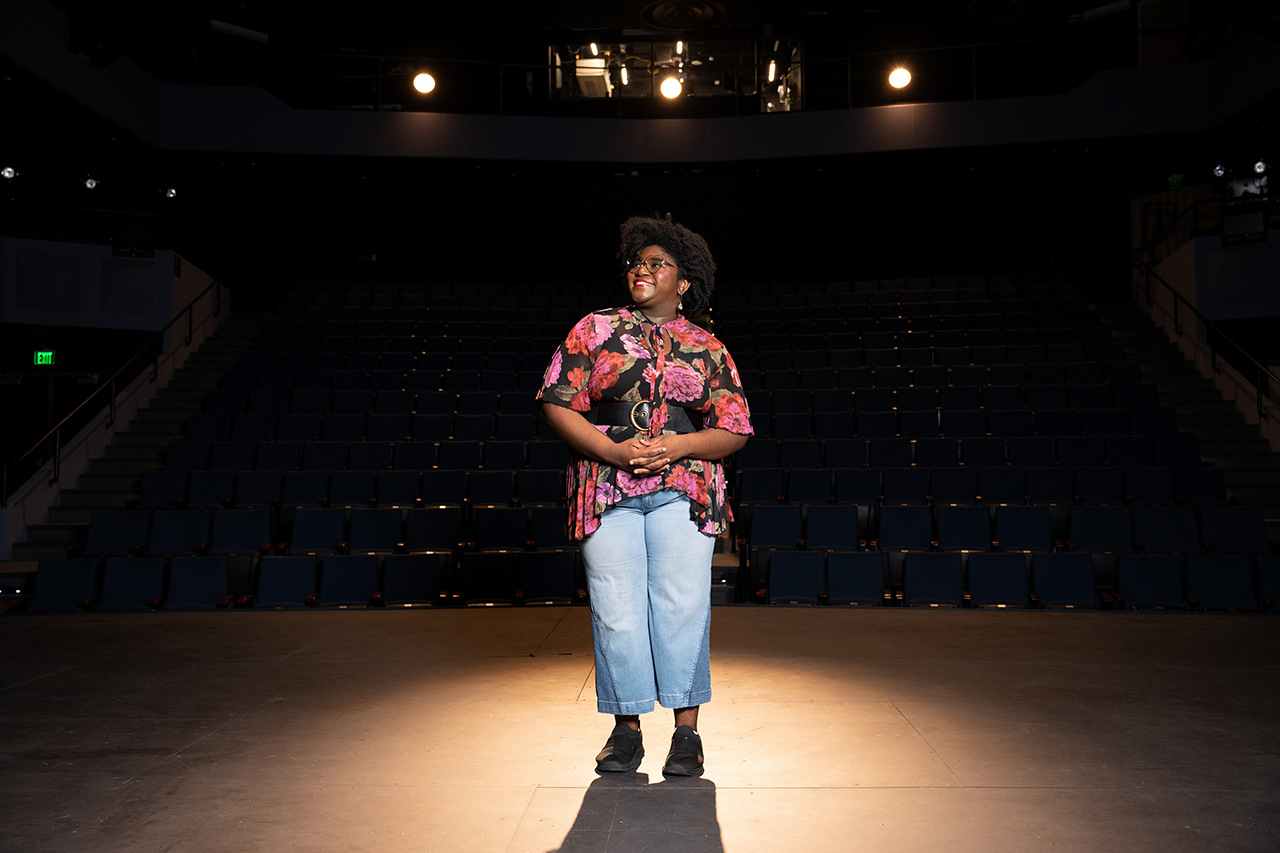College of Charleston Alumni Work on Sullivan's Island Resilience
Eight alumni from the Master of Science in Environmental and Sustainability Studies Program are leading the way in developing the Sullivan’s Island Resilience and Sea Level Rise Adaptation Plan.

Above (l–r): Alumnae Kim Morganello, Rebecca Fanning and Anna Kimelblatt (Photo by Catie Cleveland)
Not that we needed the reminder, but the flooding caused by Tropical Storm Debby once again hit home – quite literally in many cases – the need for resiliency in the face of “rain bombs” coupled with sea-level rise.
One of those areas in the Charleston region most impacted by that dual threat is Sullivan’s Island. Leading the way in developing Sullivan’s Island Resilience and Sea Level Rise Adaptation Plan for a 2-foot rise in sea levels over the next 50 years are graduates from the College of Charleston’s Master of Science in Environmental and Sustainability Studies Program. Eight alumni are working on the project, including Rebecca Fanning ’21 (M.S.), the director of resilience and natural resource management for the town; Anna Kimelblatt ’21 (M.S.), resilience project planner with climate resilience firm Weston & Sampson of North Charleston; and Kim Morganello ’08 (M.S.), senior project manager with Weston & Sampson.
You would have thought an alumni reunion broke out at the project’s kickoff meeting on May 22, 2024, inside council chambers at the town hall.
“We were going around the room doing introductions, and everybody gave a little bit of their background and what they focused on, and one after the other was like, ‘I, too, am a grad of the EVSS program,’ and, ‘So am I,’ and, ‘Me, too,’” Kimelblatt recalls. “We’re all sort of from different years, different types of backgrounds, so it’s a nice variety of alums working on this project together.”
On the 30th anniversary of the program, the expertise of EVSS alumni has never been more critical, especially to barrier islands like Sullivan’s.
“We’re so much more vulnerable to hurricane-force winds, and storms are intensifying, but there’s also something unique to Sullivan’s Island with the incredible geomorphic formation of the accreted land in the maritime forest that serves as a buffer and a real appreciation for the value of natural resources,” Fanning says. “I see an opportunity on Sullivan’s Island to deploy some of the nature-based solutions that other places may have a harder time implementing, just because gray infrastructure solutions are more easily understood and quantifiable.

“And I’m so happy that we have the bright minds that we do working on this project,” she adds, ‘because I can’t think of a better team that has more knowledge of green infrastructure solutions than the team that we have gathered for this plan.”
The first step for Weston & Sampson (one of three firms working on the project) is to do two-dimensional modeling of flood inundation on the island and simulate different types of tidal and storm scenarios to identify problem locations. They’ll also conduct a robust public-engagement process.
“The fact that so many of our alumni are contributing to such a critical project speaks volumes about the success of the EVSS Program,” says Program Coordinator Lucy Davis, noting its strengths, including an interdisciplinary curriculum focused on current issues, hands-on experience and a strong network of alumni. “Since its inception in 1994, our program has been an applied graduate program specifically designed to prepare students to work in the field and address ongoing environmental issues and solutions. Graduates leave the program not only equipped with the necessary skills but also well-connected within the field, which significantly contributes to their professional success.”
The alumni, including Lucas Hernandez ’19 (M.S.) and Kayla Pehl ’21 (M.S.) at Weston & Sampson, Katie Ellis ’17 (M.S.) and Jenna Cormany ’14 (M.S.) at McCormack Taylor, and Cheyenne Twilley ’24 (M.S.) at Elko Coastal Consulting, appreciate how well the College prepared them and the real-world application of the academics.
“It’s a real multidisciplinarian program,” Morganello says. “It’s got hard science, engineering, policy, permitting, public outreach. There are all these different interfaces and everything that we do in this field, including environmental law classes, geology, GIS and wetland science. That’s something I really appreciate about the master’s in environmental science and have found a lot of success in the professional world going about things that way.”
The research phase of the Sullivan’s Island project will take about a year to complete before a wide range of solutions are recommended, from something as simple as rain gardens to more complex engineering projects. Community input will be an integral part of this research-based approach.
“We want Sullivan’s Island to take ownership of this plan,” Kimelblatt says. “Connecting with the local community and taking the time to get out and hear them is something that EVSS really taught me.”
Adds Morganello with a chuckle: “I remember when I told people I was going to go to grad school (to study environmental science), and they were like, ‘What are you going to do with that degree?’ I don’t think people say that anymore.”



